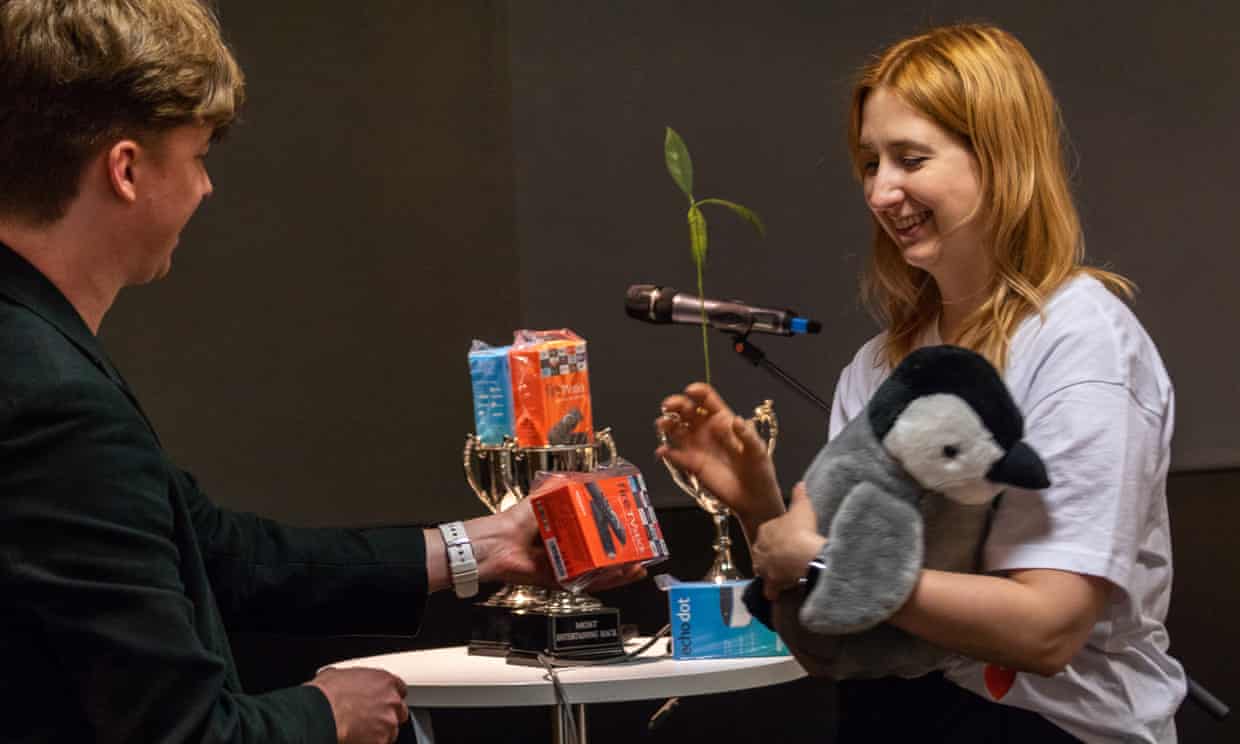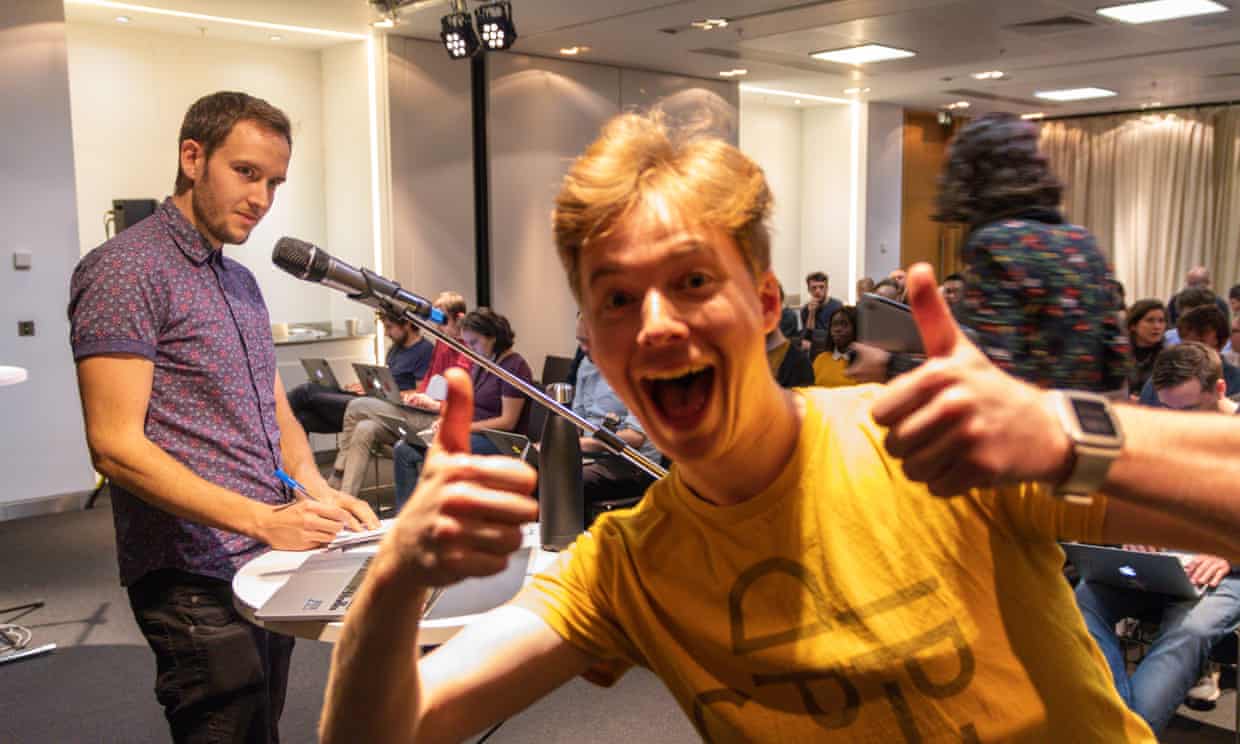The second part in this series, detailing the first days in the Guardian’s Digital department, was published here.
Cross-functional teams
The Digital department at the Guardian is composed of a number of cross-functional teams mainly containing software developers (varying in their server-side, client-side and mobile app specialism) alongside product managers, quality engineers (SETIs), UX researchers, designers and agile scrum masters - with the exact team blend largely based on the nature of the work. The teams have different areas of focus, including: the website, the mobile apps, sign-in, subscriptions/contributions, online advertising, data, interactive content, information security, editorial tools and more. The Digital teams often form ‘huddles’ with teams from the business or editorial side, to minimise the friction/delay with requirements and facilitate a quick feedback loop for changes.
The overwhelming feeling is that of working with passionate and intelligent people, most notably demonstrated when pairing, which is a big part of the developer culture here. This often takes place in your own team for knowledge sharing or tricky problems, but is also common across teams when implementing features which span the team groupings - people here are always keen to help and collaborate.
Our approach to Software Development
One of the things that the Digital department at the Guardian is well known for and certainly proud of, is developing almost exclusively ‘in the open’ - on https://github.com/guardian you’ll find that the vast majority of our repositories are public, notably including the entire website codebase, our image system called Grid and our subscriptions/contributions platform. There are of course some exceptions (for example security-related repositories) but we try where we can to make as many of our codebases public, and many of our developers also contribute to non-Guardian open-source projects, which is greatly encouraged.
We have developed various internal tools, such as AMIgo (which ‘bakes’ our AWS server images), PRout (which marks our pull requests on GitHub as ‘Seen on PROD’ when the changes have been automatically deployed after merge), RiffRaff (which is our deployment tool) and many more. These tools are mainly developed and maintained by a handful of developers (rotating every quarter), who dedicate a day per week to work on them, but everybody in Digital is welcome to make improvements and fix bugs where they see fit. Together these tools really empower us as developers to own the implementation, infrastructure and deployment, all with speed and ease, which is really quite satisfying. Combined with our general preference for lots of production monitoring rather than lots of integration tests, our suite of tools allows us to develop in a fairly agile fashion, usually with small changes, where we can get rapid feedback and therefore iterate quickly.
Working culture
Something that strikes you from day one is just how much the Digital department is a warm, diverse, supportive and safe place… and having been here for almost a year that feeling is yet to fade, and doubt it will. This is no accident, as there are a whole host of working groups that help to maintain this frankly lovely environment, which anybody is welcome to join, so as to suggest ideas and help keep it a great place to work. Remote working is becoming more common with a real effort made by all staff to include those working remotely, for example streaming meetings via Hangouts. There are options for working part-time too.
I would be remiss if I did not mention one of my favourite aspects, the dress code: there isn’t one! This might seem minor but it makes a big difference – not only can you dress comfortably, but it demonstrates that the department values people for who they are, with no pressure to conform and there really is no judgment.
An article about what it’s like to work in Digital at the Guardian wouldn’t be complete without mentioning an absolute favourite, TechTime, a Friday afternoon tech talk every week, usually delivered by someone in the department about something they’re interested in or something cool they’ve been working on.
For more dedicated but still informal learning opportunities ‘learning groups’ run for an hour on a Tuesday and Thursday, again delivered by someone who’s passionate about a topic and/or has a little expertise. For example there’s currently a series on Machine Learning, and before that there was a series on Haskell. They’re open to everyone both to attend and to deliver.
A few times a year some of the Scala experts in the department run ScalaSchool, which is an excellent chance to learn Scala from the bottom up, again open to anyone. There is of course plenty of scope for more formal/traditional training, via GuardianLearn, which offers a huge breadth of courses. We also offer tickets to external conferences, where it’s not unusual to see someone from Digital giving a talk too, something that the department welcomes. It’s also worth mentioning our Hack Days, a space to try out ideas for a couple of days. It’s in sessions like these where the creativity and diversity in the department is plain to see.

I must mention morning conference too; a meeting every morning at 10am typically led by the editor in chief, Katharine Viner, where recent and upcoming stories are discussed and are open to anyone in the Guardian, not just journalists. Morning conference is a really exciting and unique chance to get under the skin of the organisation and understand how it operates. They often include a short talk from different people across the Guardian, e.g. soon after hack days they usually feature the best hacks.
Career progression
We formally review performance every quarter, with plenty of peer review and self assessment. Running parallel to this is the career progression framework where your manager (and others) help you with achieving your career goals, whatever they may be. However we all have regular 1 to 1s with our managers, to discuss how things are going. One important topic for discussion is rotation to other teams, with the rotation typically happening at the end of the quarter as all the managers coordinate team swaps… personally this is something I value greatly, as there is a real breadth of work going on in the department, so the fact rotation is commonplace was a key factor in my decision to apply.
Extra opportunities
Working in Digital you also have the chance to sign-up for the 24/7 support rota (following some training from each team) which provides an excellent opportunity to learn and understand how all the different systems work and interact. We also have both Digital and Engineering specific ‘all-hands’ which are a chance to hear about what’s happening in the department and ask questions to leadership teams. Perhaps the best part is ‘catchings’ where we can submit thanks to other people in the department for outstanding work or where people have gone out of their way to help. They also feature a ‘reasons to be cheerful’ section and people come away from these meetings uplifted, motivated and encouraged. In addition to all-hands we also have ‘Huddle round-ups’ which are more business focussed but are also an excellent opportunity to hear about all that’s been going on and present the key achievements of your team (if you want to).
Beyond the day to day work, there are numerous ways to get involved in ‘extracurricular’ activities. One option is to take part in the recruitment process (CV screening, phone interviews, conducting pairing exercises and/or face-to-face interviews). You can really help to ensure we’re attracting the right talent and that the department remains a vibrant and effective group to be a part of. We also run a homework club for ‘CodeYourFuture’ (a coding school for refugees and disadvantaged people) where volunteers from Digital, typically mentor 1:1, to assist the students with their assignments, something that is immensely rewarding. Similarly we run some more ad-hoc events such as workshops for K+ students, Ada Lovelace day workshops as well as the more traditional work experience placements. There is also an internal mentoring scheme, both to receive mentoring but also to provide mentoring to other members of staff.
Who knows you could even get something published in the Developer Blog by writing articles like this one, as many of the members of the Digital department have.
Want to join us?
For more information about the Digital department, our developers and the roles we currently have open, see https://workforus.theguardian.com/careers/digital-development/

